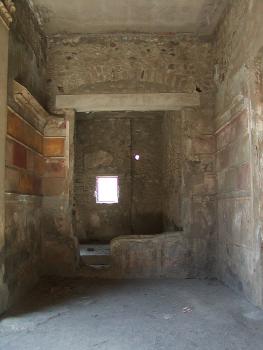American Journal of Archaeology | The Journal of the Archaeological Institute of America
You are here
Stasis and Change in Roman Domestic Space: The Alae of Pompeii’s Regio VI
January 2015 (119.1)
Stasis and Change in Roman Domestic Space: The Alae of Pompeii’s Regio VI
This article investigates the space of the alae within the atrium houses of Pompeii. It reviews ancient and modern references and presents as a case study the alae of Pompeii’s Regio VI. Following several seasons of architectural survey in Pompeii and drawing on newly published archaeological evidence from this region, data concerning the distribution, number, placement, and architectural features of the alae are presented. Modifications to the alae, such as the addition of storage installations, staircases, and lofts, are documented, suggesting a possible shift to more independent spaces that served specific functions associated with household activities. On the one hand, such modifications emphasize the versatility of Roman domestic space and provide glimpses into the disruption of domestic and urban life in Pompeii in the decades that preceded the 79 C.E. eruption. On the other hand, they may also serve as potential indices of broader socioeconomic changes in the Late Republic and Early Empire.
Stasis and Change in Roman Domestic Space: The Alae of Pompeii’s Regio VI
By Elisabetta Cova
American Journal of Archaeology Vol. 119, No. 1 (January 2015), pp. 69–102
DOI: 10.3764/aja.119.1.0069
© 2015 Archaeological Institute of America


